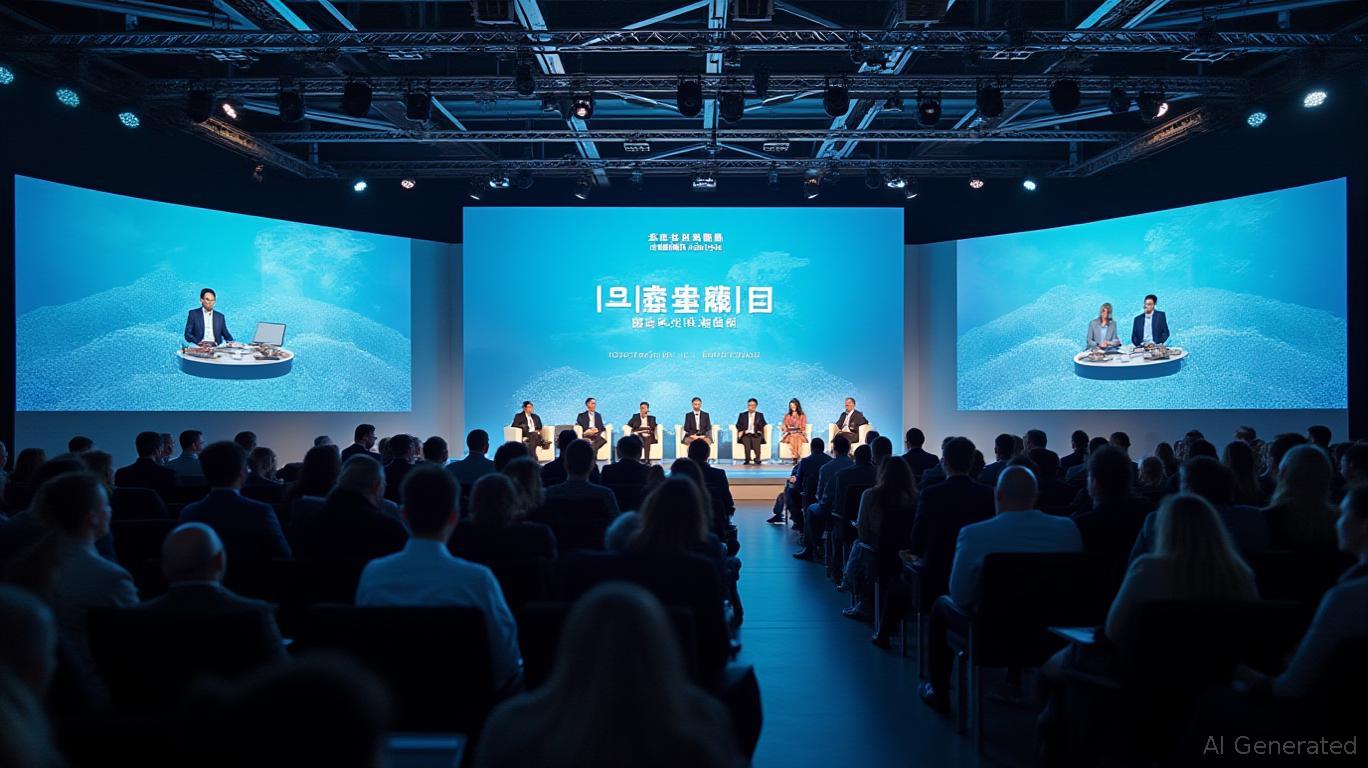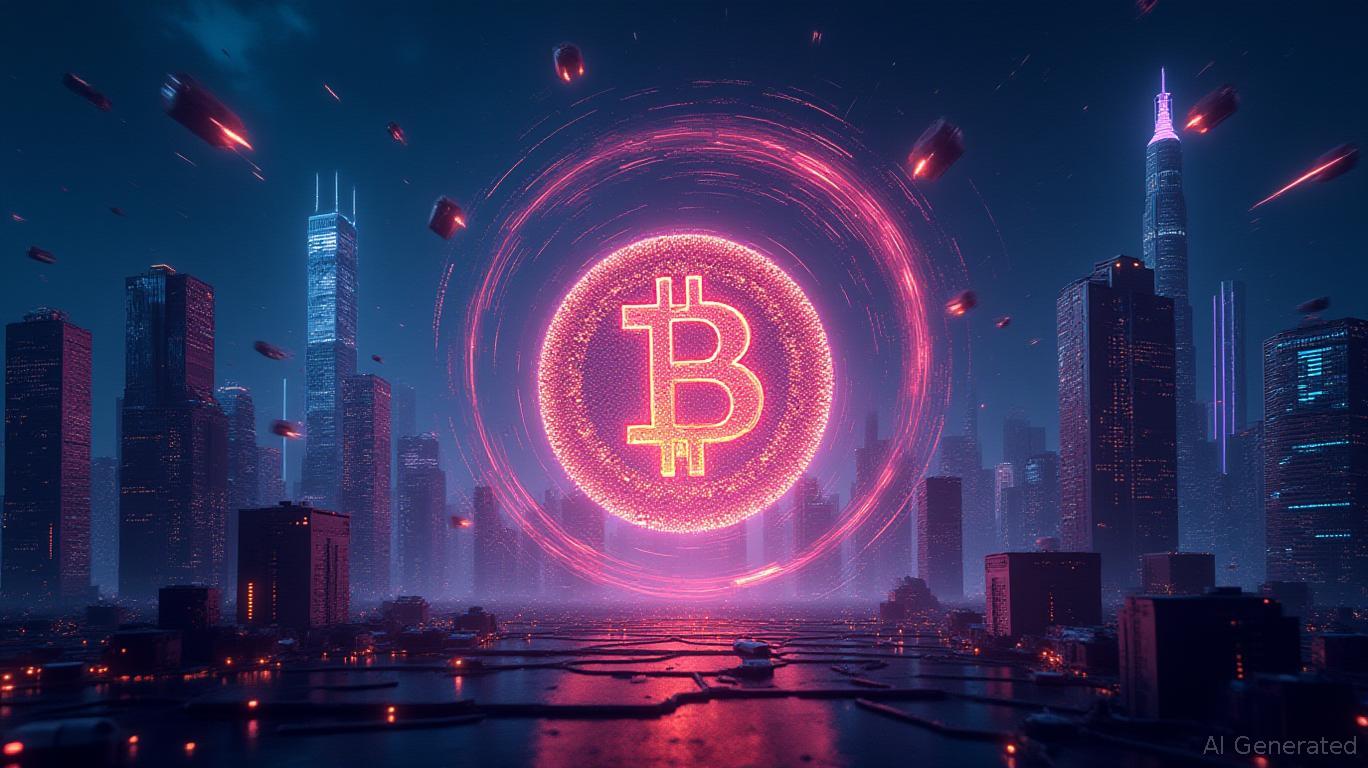NVIDIA's integration of quantum and classical technologies drives U.S. leadership in science and artificial intelligence
- NVIDIA unveiled NVQLink, a hybrid quantum-classical architecture partnering with Alice & Bob, Quantinuum, and IonQ to stabilize qubits and enable error correction. - The system integrates quantum processors with GPU supercomputers, accelerating AI, simulation, and optimization while deploying 100,000+ Blackwell GPUs at Argonne National Lab. - IBM's quantum error-correction breakthrough using AMD chips aims for fault-tolerant systems by 2029, boosting stock confidence despite experts cautioning technical
NVIDIA has taken a leading role in the emerging field of hybrid quantum-classical computing, a sector that is quickly advancing and holds promise for both scientific discovery and national defense. During the GTC conference in October 2025, CEO Jensen Huang introduced
NVIDIA’s commitment is further demonstrated by the launch of two AI-optimized supercomputers, Solstice and Equinox, at Argonne National Laboratory. These machines, featuring 100,000 and 10,000 Blackwell GPUs respectively, are expected to be operational by mid-2026, according to NextGov. Huang described this project as vital for maintaining U.S. leadership in science, echoing Energy Secretary Chris Wright’s mission to strengthen domestic innovation. "Computing is the essential tool of science," Huang remarked, underlining the revolutionary impact of GPU-driven supercomputers.

Other companies in the quantum sector are also adopting NVQLink to push forward hybrid computing.
At the same time,
Despite these achievements, specialists warn that the disruptive impact of quantum computing is still several years away. The process of merging quantum and classical technologies is just beginning. Mourad Beji from Pasqal described NVQLink as a "major step" toward practical quantum computing but pointed out that widespread use will depend on overcoming significant technical and financial challenges, as reported by NextGov. Similarly, IBM’s projection of 2029 for fault-tolerant quantum systems highlights the lengthy development timeline required for these technologies to mature.
The global consequences of these developments are also profound. As the U.S. and China vie for dominance in quantum technology, government measures such as export controls and investment screening are influencing the industry’s path. A recent piece in
Although quantum computing poses a potential risk to
Disclaimer: The content of this article solely reflects the author's opinion and does not represent the platform in any capacity. This article is not intended to serve as a reference for making investment decisions.
You may also like
Chainlink Faces $18.25 Hurdle: Will Bulls Prevail or Bears Take Control?
- Chainlink (LINK) trades in $16.5–$18.5 range as analysts highlight critical support/resistance levels for November 2025 price action. - Whale accumulation (1.84% increase in top 100 holdings) and RSI recovery signal potential stabilization amid sideways movement. - Key support at $13.50–$14.50 could trigger a rebound to $27.86, while breakdown below $16.98 risks further bearish pressure. - Strengthening fundamentals, including S&P Global partnership and reserve expansion, underscore resilience despite ma
Cross-Ecosystem Expansion 2025: Strength Built via Consolidations, Sustainable Practices, and Worldwide Transformations
- Companies across sectors adopt cross-ecosystem strategies in 2025 to address market shifts, regulations, and tech advancements. - American Water merges with Essential Utilities to boost infrastructure efficiency, reflecting utility sector consolidation trends. - Stem Inc. and Visa expand globally through tech platforms and services, leveraging cross-border opportunities amid macroeconomic uncertainty. - Europe's $83.6B food packaging market grows toward $124.8B by 2034, driven by sustainability mandates

Bitcoin Updates: Bittensor's AI Innovation Reflects Bitcoin's Economic Transformation, Drives TAO Growth
- Bittensor's TAO token surged 18.76% to $520 on Nov 1, driven by Europe's first staked TAO ETP launch and growing institutional interest in decentralized AI infrastructure. - Safello and Deutsche Digital Assets' STAO ETP (1.49% fee) on SIX Swiss Exchange, backed by cold-stored TAO, catalyzed a 20% price rally post-launch. - The ETP's success reflects institutional confidence in blockchain-AI convergence, with TAO's $5.31B market cap and 200% YoY TVL growth highlighting its disruptive potential. - Regulato

Dallas Fed’s Logan Opposes Rate Cuts in December